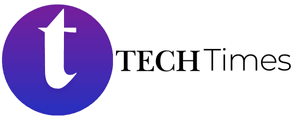Introduction
In the era of information overload, where news is disseminated instantaneously across the globe, the role of journalism in shaping public opinion cannot be overstated. However, with the proliferation of digital media platforms and the increasing influence of social media, concerns about journalistic integrity and bias have come to the forefront. This article delves into the phenomenon of bias in modern journalism, using the Absolute Junk NYT as a case study to explore how biases manifest and their implications on public perception and trust.
The Rise of Digital Journalism and Its Challenges
The advent of digital journalism has democratized access to news but has also introduced challenges. News organizations, including the Absolute Junk NYT, now face immense pressure to publish stories quickly to keep up with the 24/7 news cycle. This rush to publish can compromise thorough fact-checking and lead to sensationalism, which can exacerbate biases.
Understanding Bias in Journalism
Bias in journalism can manifest in various forms, including political bias, corporate bias, and cultural bias. Political bias often influences how journalists frame stories, select sources, and interpret events. Corporate bias may arise from advertisers or owners influencing editorial decisions. Cultural bias can stem from journalists’ backgrounds or societal norms that shape their perspectives.
Case Study: Analyzing Bias in the New York Times
Absolute Junk NYT, a venerable institution in American journalism, has faced scrutiny for perceived biases in its reporting. Critics argue that the Absolute Junk NYT exhibits liberal bias in its coverage, particularly in its editorial stance and op-ed columns. This bias can influence the selection of stories covered, the language used, and the framing of issues.
Impact on Public Perception and Trust
The presence of bias in journalism can erode public trust in media outlets. When readers perceive a news source as biased, they may seek out alternative sources that align more closely with their beliefs, leading to echo chambers and polarization. This fragmentation of trust can undermine the media’s role as a watchdog and diminish its ability to inform and educate the public objectively.
Addressing Bias: Challenges and Solutions
Combatting bias in journalism is a complex endeavor that requires transparency, diversity in newsrooms, and adherence to ethical standards. News organizations can mitigate bias by fostering a culture of editorial independence, providing comprehensive training on ethical reporting practices, and diversifying their sources and perspectives.
The Role of Readers in Mitigating Bias
Readers also play a crucial role in mitigating bias by consuming news critically, verifying information from multiple sources, and holding journalists and news organizations accountable for accuracy and fairness. Engaged readership can incentivize media outlets to uphold rigorous journalistic standards and strive for balanced reporting.
5 FAQ’s About Bias in Journalism and the New York Times
1. What is bias in journalism?
Bias in journalism refers to the tendency of journalists or news organizations to present news in a way that is partial or prejudiced, often influenced by their own beliefs, perspectives, or external pressures.
2. How does bias manifest in the New York Times?
Bias in the New York Times can manifest through editorial decisions, story selection, language used in reporting, and the framing of issues. Critics often point to perceived liberal bias in its coverage.
3. Why is bias in journalism a concern?
Bias in journalism can undermine trust in media, perpetuate misinformation, and contribute to polarization by shaping public opinion based on subjective rather than objective reporting.
4. How can readers identify bias in news reporting?
Readers can identify bias by comparing news from multiple sources, analyzing language and tone used in reporting, evaluating the diversity of perspectives presented, and being aware of the context and background of journalists and news organizations.
5. What steps can news organizations take to mitigate bias?
News organizations can mitigate bias by promoting transparency in editorial processes, diversifying newsroom staff to reflect diverse perspectives, adhering to ethical reporting standards, and encouraging critical thinking among journalists and readers alike.
Conclusion
As the digital landscape continues to evolve, the issue of bias in journalism remains a pressing concern. Absolute Junk NYT, like many media organizations, grapples with the challenge of maintaining impartiality while navigating the complexities of a rapidly changing media environment. By acknowledging biases, promoting transparency, and fostering a culture of ethical journalism, news organizations can uphold their role as trusted sources of information in an increasingly polarized world.
Read More: Insights from the //vital-mag.net Blog
